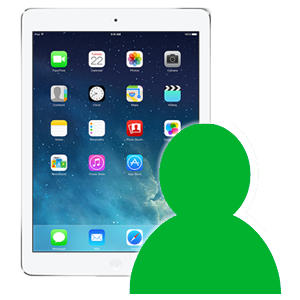 In a ‘pure’ BYOT environment the discussion about managing student-owned devices, and the software installed on those devices, is a relatively short discussion….
In a ‘pure’ BYOT environment the discussion about managing student-owned devices, and the software installed on those devices, is a relatively short discussion….
Students own their devices and associated apps, and are responsible for the management of those devices and apps.
The school’s only ‘device management’ role should be the development of related policy guidelines, and the provision and maintenance of reliable access to network resources.
Students are used to configuring their devices at fast-food outlets, shopping centres, and other venues that provide wireless network access – school is no different.
While many schools (understandably) begin their BYO journey with a relatively conservative approach, focussing on the technology by mandating particular hardware and software, it doesn’t usually take too long for the stringent technology controls to relax as staff become more comfortable with a diverse approach to ‘the technologies’, and return their focus to learning outcomes.
Here is a typical BYO continuum at a high school, in a Year 7 English class, over a couple of early BYO years…
 |
Mature BYO (beyond the first 18 months of BYO)
|
Mid BYO (over the next 6 months)
|
|
Early BYO (first 8 months)
|
|
The critical factors in the maturation of the BYO environment described above are:
- teacher comfort with the use of student-owned technologies;
- a culture of ‘trust’ in the whole-school environment.
(It may be that the ‘culture’ of a school dictates the longer-term mandatory use of specific apps and devices. Nothing ‘wrong’ with this – the continuum above may not be applicable to all schools.)
In the past the school has been responsible for providing the technologies that support curriculum activities, thus making teachers responsible for solving technology problems in classrooms. As a result of this past experience, the initial model in most new BYO schools is to mandate a one-size-fits-all solution (which mimics the old school-owned devices model) to provide a technology environment which can be ‘managed’ by the teacher.
However, as time will soon tell, a teacher has such a small overall impact on their students’ interaction with modern technologies that there is little need for teachers to be the ‘masters’ of the technology that kids use in their classrooms. These students are managing their own technologies 24/7/365 in a wide variety of environments – why can’t they do it during a 1 hour class at school?
So, the bottom line is that a true BYO environment requires very little ongoing support from the school for the actual student devices. BYOT is exactly that – bringing all your own technologies – hardware, apps, configuration and maintenance. And choosing when and how to use that combination of technologies in an appropriate manner in different environments.
The school management responsibility in a BYOT environment is in providing clear (though flexible) guidelines and maintaining reliable access to network resources across the campus.
- See also: Managing the ‘Other’ storage in iOS >>>